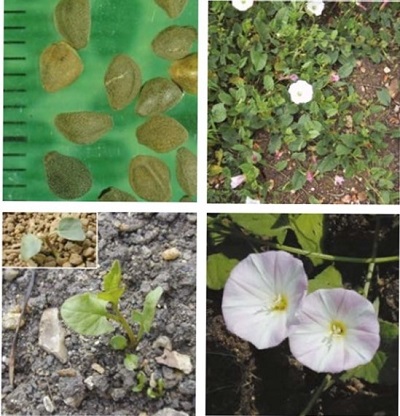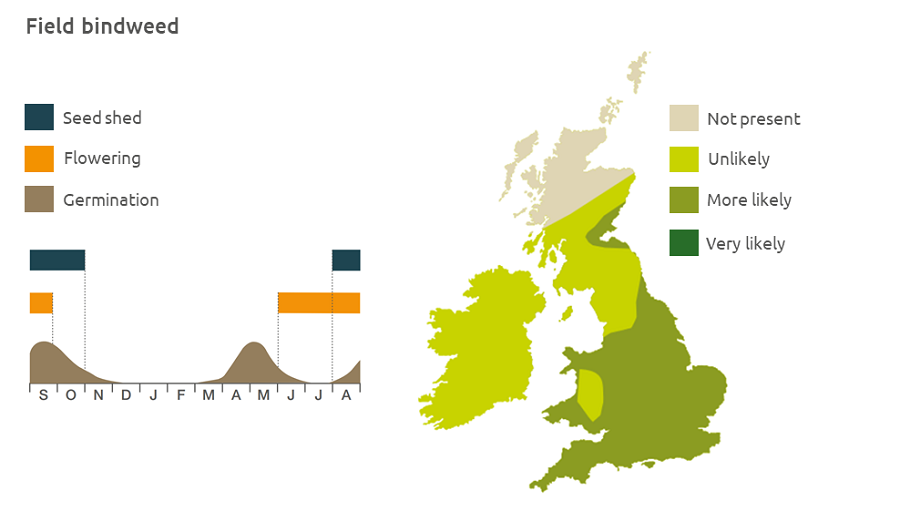- Home
- Knowledge library
- Distribution and biology of field bindweed in the UK
Distribution and biology of field bindweed in the UK
Field bindweed is a persistent, broad-leaved weed. Find out how to identify and control it.
Overview
Field bindweed (Convolvulus arvensis) is a persistent and troublesome perennial weed. It can be found both on disturbed arable land and on undisturbed sites such as field margins.
Field bindweed plants die back in autumn. The roots overwinter although they can be susceptible to freezing. The plants can regenerate from fragments of horizontal roots and, though seed set is unlikely in Britain, the long-lived seeds rapidly germinate. Seeds may be dispersed by birds. It can severely reduce crop yield and also cause difficulties with harvesting. Field bindweed does not persist in long grass leys or in grazed or mown land.
Description
It is a perennial dicotyledon, 20–100 cm tall, which trails or climbs up other plants. The flowers are trumpet-shaped, usually striped pink and white.
Key features
Plant: The heart-shaped leaves are rounded at the tip and the plant twines to the left, anti-clockwise.
Lookalikes
Field bindweed may be confused with black-bindweed as young plants.
The difference is in the cotyledons; black-bindweed has long cotyledons with short stalks, while field bindweed has oval cotyledons, notched at the tip.

Location and life cycle

Geographic distribution
Field bindweed is found in a wide variety of lowland habitats including verges, waste tips, and disturbed and arable ground.
Soil type
It likes dry, warm, nutrient-rich deep and loose loams.
Seed statistics
- Seed longevity: >5 years
- Germination depth: 6.9 cm
- Seed weight: 10 mg
- Seeds/flower: 1–4
- Seeds/plant: 550
Management
The leaves and stems are difficult to wet with herbicides, but spring herbicides for broadleaved weeds in cereals are effective. It can be controlled in fallow with glyphosate.
For advice on herbicides, please speak with your agronomist or adviser.
When was this information last updated?
This page is based on content from the encyclopaedia of arable weeds publication. Since it was first released in 2008, the publication has been redesigned several times but not revised. However, it remains a good foundation for general information on the distribution and biology of weeds.

